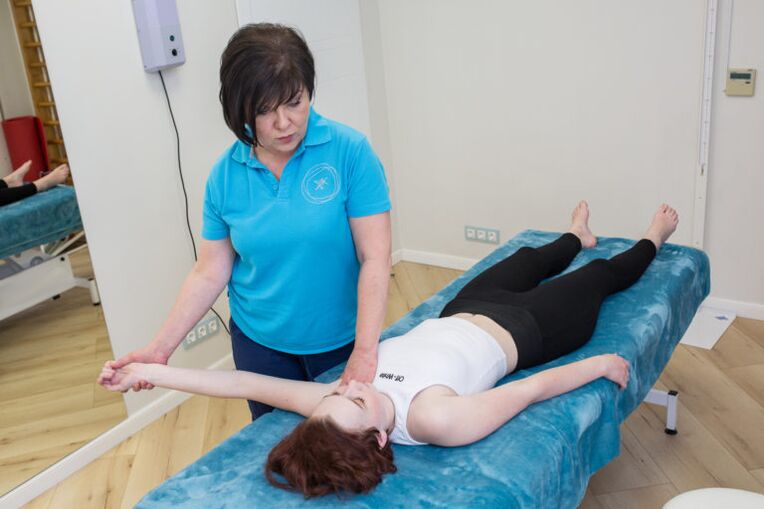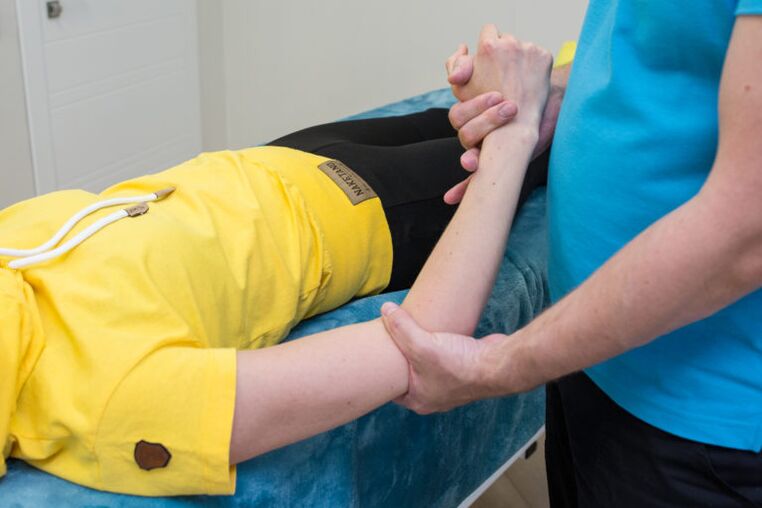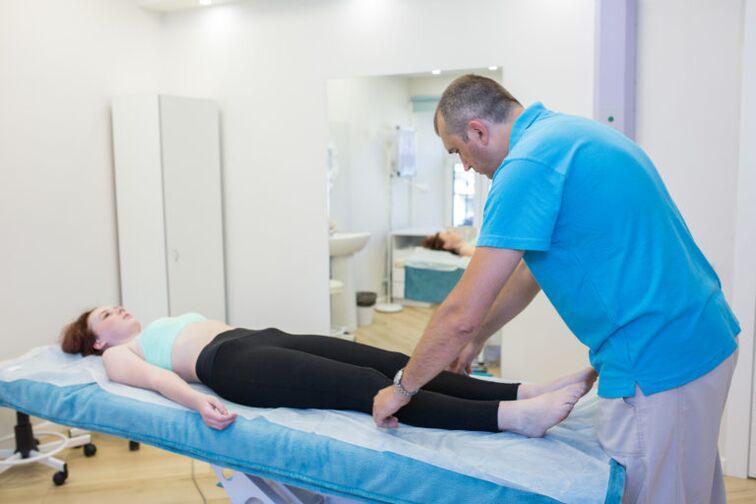Joint diseases are one of the most common manifestations of musculoskeletal disorders. They develop in the presence of inflammatory, degenerative-dystrophic, infectious processes in the body, as well as as a result of traumas and congenital disorders.
Doctors distinguish dozens of different joint diseases that have fairly similar symptoms (pain, crackling, limited movement). This complicates diagnosis and disrupts timely treatment. Therefore, in this article, the experts will tell you about the manifestations and developmental features of the most common joint pathologies.
Characteristics of joints and causes of their diseases
Any joint of two or more bones in the joint. There are 38 pairs of joints in the human body (76 joints in total). They provide mobility and flexibility to our bodies. Exercise is a vital function, and if the disease limits it, the quality and duration of life decreases.
Every joint has a joint surface - these are the surfaces of the bones that get in, covered with special hyaline cartilage. It is dense, flexible, and needed to protect bones from abrasion during movement. This also ensures a perfect fit. Cartilage wear is a common cause of joint pain, cracking, stiffness, and other signs of disease in the joints.

The joints are characterized by a complex structure. Joint surfaces, capsules, cracks, joint muscles, periarticular muscles and ligaments - all of these structures provide motor and supportive functions for the joint. Their damage can provoke the development of the disease.
Causes of diseases
Many people mistakenly believe that only the elderly suffer from joint disease due to age-related changes and body weakness. But this is not the case!
Joint diseases can have the following consequences:
- injuries;
- overweight;
- physical activity;
- improper posture;
- goosefoot;
- hereditary predisposition;
- foods with insufficient micronutrients;
- diseases of the internal organs;
- metabolic disorders;
- transferred operations;
- infections.
People of any age, but even those in relatively good health (such as men and women of working age, adolescents, children, athletes, etc. ) can face the effects of these factors.
As a result, this group of diseases is becoming younger - second only to cardiovascular and endocrinological diseases in terms of incidence and disability, and their treatment is costly.
Mechanism and types of disease development
In the pathogenesis of joint damage, doctors distinguish 4 possible pathways:
First, the presence of inflammation in the body
This type of lesion is characterized by a sudden onset, with a rapid increase in the symptoms of inflammation: swelling, pain, redness, fever. It occurs in children and adults in infections, allergies, autoimmune processes.
Juvenile arthritis
It is characterized by an autoimmune process (i. e. , the body destroys itself), the cause of which is unknown. Transmitted infections, even in mild forms (such as vaccinations), are often provocative.
The disease affects the large joints (knees, elbows) of children and adolescents, negatively affecting their growth and development. Joint pain is accompanied by severe swelling, redness and fever.
Rheumatoid arthritis
It is also caused by an autoimmune process for no apparent reason. Women are more likely to be ill, with an average age of 45 to 50 years. 70% of patients become disabled.
It affects a small (or more) joint, such as the wrist, fingers. This affects patients' ability to work and even self-sufficiency. They complain of severe pain, swelling, deformities in the joints and morning stiffness.
Psoriatic arthritis
In nearly half of patients diagnosed with psoriasis, the inflammatory process develops in the small joints of the hands, feet, and spine. The cause of arthritis, as well as the cause of the underlying disease, is unknown.
Psoriatic arthritis can affect the interdigital and large (elbow, knee), one or more joints, symmetrically or not.
The main manifestations are the presence of pain that extends to the ligaments and tendons, swelling of the fingers and blue skin, restriction of mobility.
Gouty arthritis
It develops in the background of gout as a result of the deposition of uric acid salts in the joints. Men suffer more often than women, their age - 40-50 years and over 60 years.

Its characteristic feature is the defeat of one joint, which begins abruptly, lasts for several weeks, and is accompanied by severe pain and swelling, with the formation of uric acid lumps (tofus).
Spondyloarthritis with ankylosing spondylitis
Chronic lesion involving the spine, paravertebral muscles and the sacroiliac joint of the pelvis.
Men are more likely to suffer from this disease than women and develop at the age of 20-30. Their main complaint is pain in the lower back, sacrum, hip joints; stiffness after a rest period (especially in the morning, after sleep).
Even with relief of symptoms and relative well-being, without eliminating the underlying cause, the inflammation continues to develop and causes another exacerbation over time. Therefore, joint pathology often becomes chronic and leads to disability.
Second, the presence of a degenerative-dystrophic process
In these types of lesions, the joint is destroyed by physical factors. Injuries and microtraumas, constant, excessive physical exertion, adverse effects of the environment (hypothermia, vibration) - all these pathological factors cause cartilage destruction and narrowing of the joint gap.
Deforming osteoarthritis
It develops as a result of damage and destruction of articular cartilage. Its joint surfaces become rough and sensitive to friction. Over time, the process of decay goes to the bones, the capsule, the synovium, the ligaments, and the muscles. Chronic inflammation and joint deformity appear.
Osteoarthritis is the most common joint pathology. It reduces the quality of life of patients, causes disability and is difficult to treat. Men are more likely to get sick at a young age than women at an older age.
Clinically, osteoarthritis manifests as severe pain and limited mobility that are exacerbated by physical exertion. In the later stages, even rest and tranquility do not bring relief.
Osteochondrosis
It affects the spine and is caused by degenerative processes in the intervertebral discs. Negative factors disrupt the feeding of the cartilage discs, leading to loss of shape (up to protrusions and hernias), aging, and destruction.

As a result, the spine loses its mobility, pain, numbness, stiffness of movement, muscle weakness, difficulty urinating and bowel movements, headaches, and dizziness. The symptoms depend on which part of the spine the osteochondrosis has developed and can be very different.
Deforming spondylarthrosis
This condition is also called "facet syndrome. "In this case, the destruction process affects the structures of the intervertebral joints (capsule, ligaments, facets).
It most commonly occurs in the most "overloaded" part of the spine - the groin. It manifests as pain that radiates to the feet and intensifies with prolonged walking or standing still.
Osteochondropathy
It is caused by aseptic (non-infectious) bone necrosis, for example due to damage to the blood supply. As a result, the bones entering the joint are prone to frequent fractures. In advanced cases, patients may be severely injured even during sleep.
In the early stages, the disease does not manifest in any way. Many sick people are athletes and people who lead a "healthy" lifestyle. The former are subjected to excessive stress, the latter deliberately restricting their diet and depriving the body of the necessary substances.
To destroy dense and flexible cartilage, the pathogen must act on the joint for years, so degenerative-dystrophic lesions are more common in old age. Or you have to act with super power like in sports.
Many professional athletes become disabled in their youth.
Third: congenital joint pathologies
These types of lesions cause abnormalities in the structure and development of the joints due to maternal infections and injuries, concomitant pathology, late toxicosis, and genetic diseases.
Birth trauma, such as hip dislocation or collarbone fracture, is a common manifestation of congenital anomalies.
Congenital dysplasia of the hip joints
It develops as a result of violation of the formation of all joint structures in the prenatal and postnatal period. Predisposing factors are heredity and a tight bandage. Girls are more susceptible to this pathology than boys - the incidence is 80% and 20%, respectively.
In dysplasia, the shape of the joint changes and the ligaments are too flexible. This causes dislocation of the femur and impedes mobility of the hip joint, which can lead to disability.
Congenital goose foot
Deformity in which the foot turns inward relative to the lower leg due to the defeat of the ankle joint.
Goosefoot often affects boys and is bilateral in half of the cases. If the fault is not rectified in time, the child will not be able to walk normally and will remain disabled.
Marfan syndrome
Genetic pathology in which the patient has elongated bones in the arms and legs and hypermobility (excessive mobility) of the joints.
In the early stages, many congenital joint pathologies can be completely eliminated or development can be slowed down by conservative methods. Late diagnosis and treatment can lead to impairment of supportive and locomotor functions, even disability.
Fourth, diseases of the joint muscles and ligaments
Pathologies in this group often result from increased exercise and hypothermia.
Tendinitis
Inflammation and destruction of the tendon. His tension and painful feelings accompany him, especially in the weather.
Myositis
Development of inflammation in the periarticular muscles. It is accompanied by pain when the affected area is touched, which increases with movement.
Bursitis
The inflammatory process is localized in the joint capsule. It often affects professional athletes (wrestlers, runners, weightlifters).
Synovitis
Damage to the synovial membrane by accumulation of fluid in the joint cavity. It is accompanied by pain, swelling and stiffness of movements.
Relationship between disease and joint type
There is a certain pattern of which pathology affects which joint. Some of them also have their own specific names.
For example,knee jointmay be affected at any age, regardless of the patient’s gender and occupation. But the defeat of meniscus and cruciate ligaments is more common in athletes. Gonarthrosis - in the elderly. Inflammatory arthritis - in children.
It's in painshoulder jointshoulder blade periarthritis, cervical osteochondrosis, osteoarthritis.
Becauseelbow jointtypical damage to periarticular tissues - epicondylitis or "tennis elbow", "golf elbow".
The hip joint is more commonly affected in the elderly. There is a risk of fractures of the femoral neck due to osteoporosis and coxarthrosis.
It's in painsmall jointshands and feet with rheumatoid, psoriatic, gouty arthritis.
But despite the specific manifestations, the diagnosis of joint pathology often causes difficulties, which are fraught with late initiation of treatment and the risk of complications.
Symptoms and diagnosis
Complaints disturbing patients with joint pathology include:
- Pain;
- Swelling and bloating;
- Deformation;
- Stiffness of movement;
- Inability to perform the normal range of motion.
Doctors call them joint syndrome. Doctors call them joint syndrome. Redness, rashes and thick lumps are also possible. Among the general symptoms, patients often complain of an increase in the temperature of the lesion or the whole body, increased fatigue.

Reading the previous section, you may have noticed that these symptoms are found in almost all joint pathologies. Therefore, it is impossible to make a clear diagnosis based on complaints alone - examination and medical consultation are required.
During the examination of the patient, the doctor does not only pay attention to his complaints. To make an accurate diagnosis, it is important to know the time of their occurrence, which joint is affected, whether one or more of these lesions are symmetrical, and other factors.
Let's take a closer look at each of the symptoms:
Pain:
It occurs in almost all pathologies. Doctors distinguish several types:
- Inflammatory- increases towards the morning, after a rest period. Characteristic of rheumatoid, juvenile, gouty arthritis, spondyloarthritis.
- Mechanical- appears during physical exertion or changes in body position, often disappearing in the late afternoon after rest. Typical osteoarthritis, osteoarthritis, osteochondrosis, periarticular tissue pathology.
- "Start"- occurs during the first 15-20 minutes of physical activity after rest. Typical osteoarthritis.
- "Blockade"- is caused by a pinching in the joint space of a cartilage fragment, which causes the joint to "jam". It may be accompanied by a crunchy sound. It occurs in osteoarthritis.
- Constant- exists regardless of load and time of day, may increase at night. Typical osteochondropathy, osteomyelitis, tumors, and bone tuberculosis.
Number of joints affected:
- One (monoarthritis): juvenile, gouty, psoriatic arthritis.
- Two to four (oligoarthritis): rheumatoid arthritis, spondyloarthritis.
- More than four (polyarthritis): rheumatoid, with gouty arthritis.
Symmetry of the lesion:
- Symmetrical: in rheumatoid arthritis.
- Asymmetric: spondyloarthritis, gout, osteoarthritis.
- "Migrant": gouty.
Morning stiffness in the joints:
The patient feels this as the impossibility and tension of movement. This happens in the morning and involves the accumulation of nocturnal fluid in the joint cavity. It is characteristic of rheumatoid arthritis, spondyloarthritis.
In addition, the doctor pays attention to general complaints:
- Increased body temperature;
- Redness of the skin, presence of rashes on it;
- Defeat of internal organs.

Laboratory (blood, joint fluid analysis) and instrumental examinations (X-ray, CT, MRI, ultrasound) are required to make an accurate diagnosis.
Conclusion
Joint pain and dysfunction can be caused by a number of causes. There are pathologies that cannot be treated, but many of them, with proper and timely treatment, allow a person to live a full life. Therefore, if at least one of the listed symptoms occurs, consult your doctor - do not diagnose yourself, do not prescribe treatment, and even more so do not tolerate the pain.
We use a holistic approach to treating joint pain, thanks to which many of our patients have regained the joy of movement.























